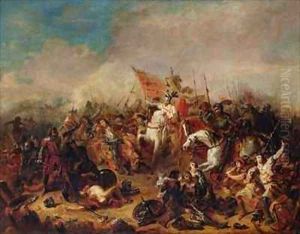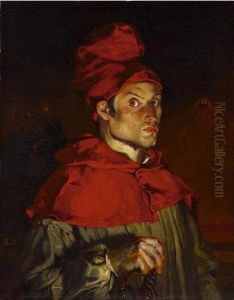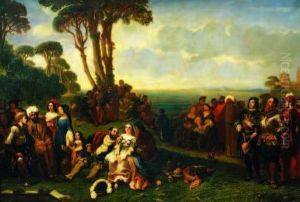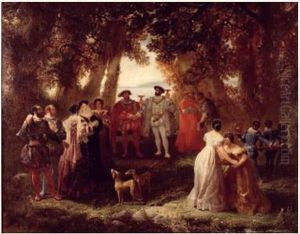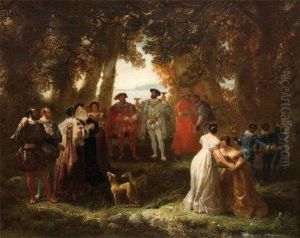Francois Hippolyte Debon Paintings
François Hippolyte Debon was a French artist known for his painting and lithography, born in 1807 and passing away in 1872. His works are less widely known in the mainstream art world compared to his contemporaries, yet they provide a fascinating glimpse into the artistic movements and societal interests of his time. Debon's career spanned a period of significant transformation in French art, witnessing the waning of Neoclassicism and the rise of Romanticism, followed by the early inklings of Impressionism.
Debon's artistic output includes a range of subjects, from historical scenes and portraits to landscapes. His style evolved over his career, reflecting the broader shifts in art practices and aesthetic values of 19th-century France. Initially, his work showed a strong influence of Neoclassicism, with its emphasis on clarity, order, and beauty. However, as the Romantic movement gained momentum, Debon's work began to embrace its characteristic focus on emotion, the sublime, and the dramatic. Despite this evolution, he never fully abandoned the technical precision and attention to detail honed in his early years.
Throughout his career, Debon navigated the changing tastes of the art market and the shifting landscapes of political and social life in France. His works were exhibited in several Salons, the official art exhibitions of the Académie des Beaux-Arts in Paris, which were crucial for artists seeking recognition and patronage. While Debon might not have achieved the fame of some of his peers, his contributions to the art of his time were nonetheless significant. He captured the spirit and complexities of 19th-century France, from its grand historical narratives to the subtleties of its natural landscapes.
After his death in 1872, François Hippolyte Debon's work fell into relative obscurity, overshadowed by the more prominent figures of his era. Despite this, he remains a subject of interest for art historians and collectors who are keen to explore the depth and diversity of 19th-century French art. His paintings and lithographs, while not as plentiful or well-documented as those of some contemporaries, continue to be appreciated for their craftsmanship and historical value.
